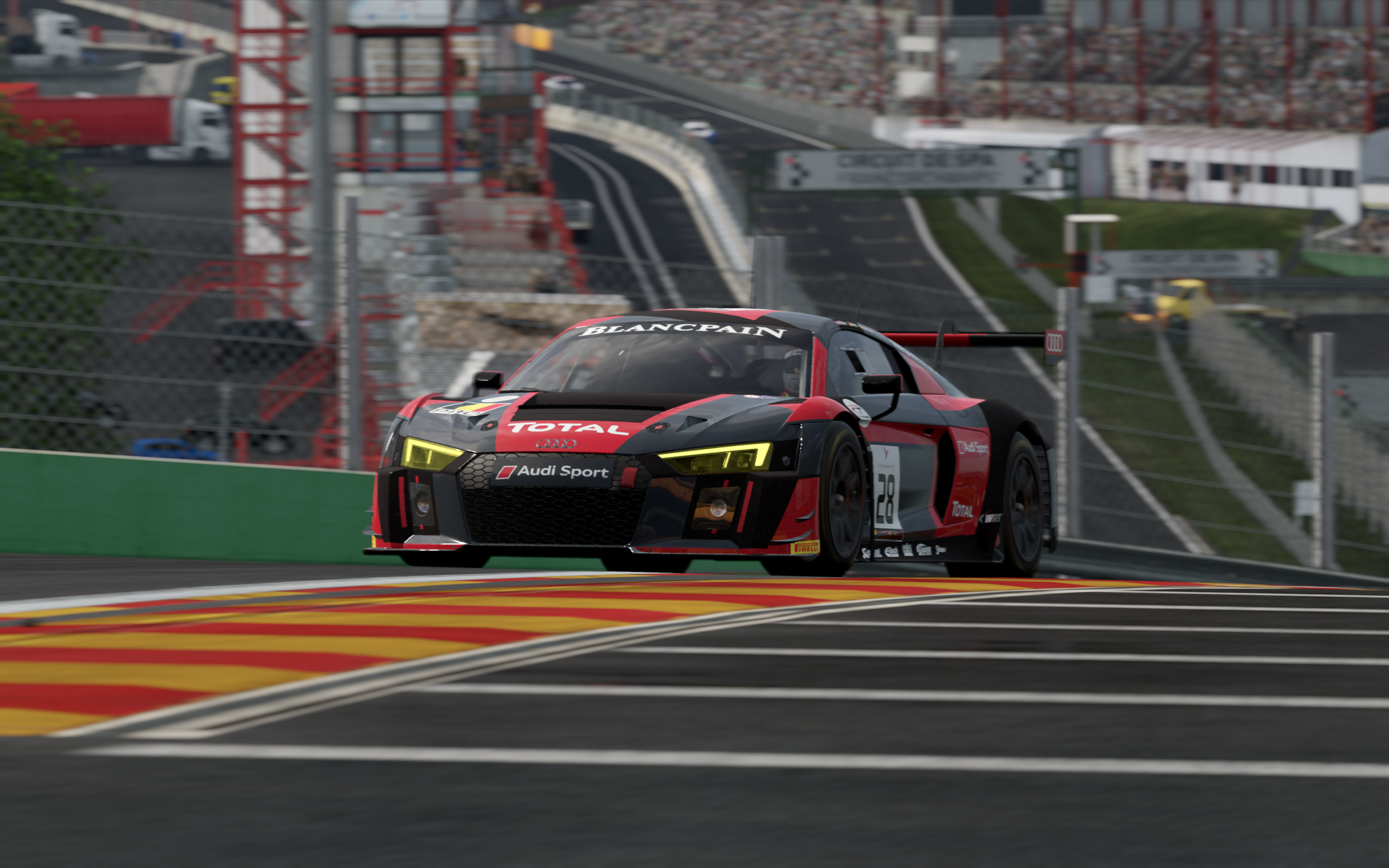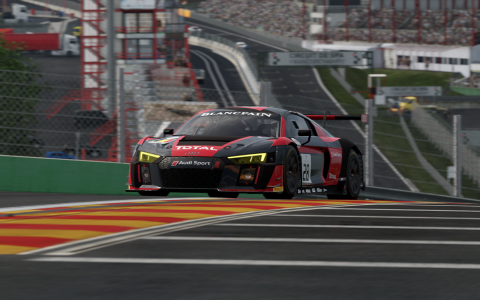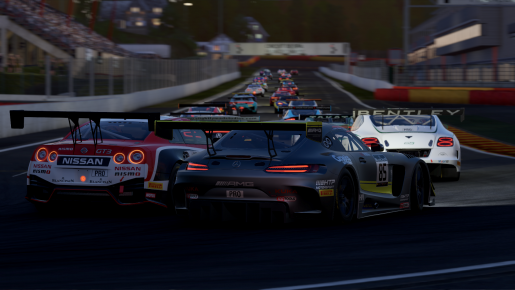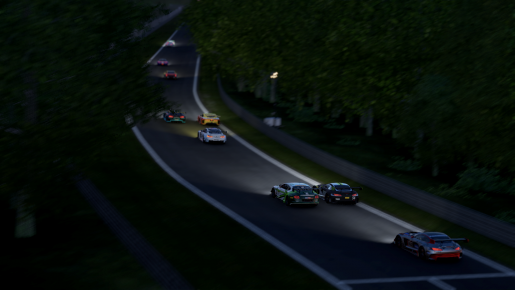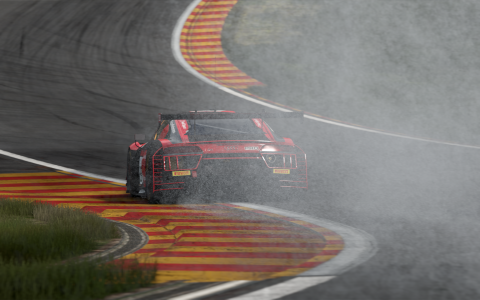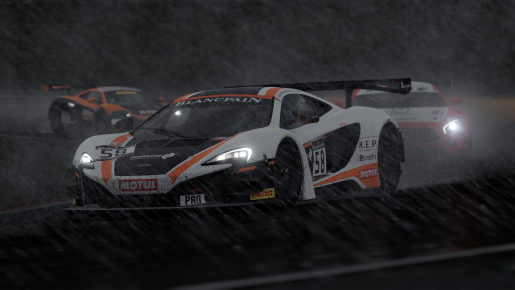Project Cars 2 is, as you may have guessed from the title, a racing game developed by Slightly Mad Studios. I’ve spent a good deal of time with a near final build of the PC version of the game, and it was immediately obvious that this is a racing simulator even more so than the likes of Gran Turismo and Forza Motorsport though perhaps not quite to the extremes of iRacing. The game comes with a huge variety of tracks and cars spread across many types of racing, from go karting to rally cross and formula series.
The default settings for the game don’t have any assists turned on (realistic assists like traction control being used depending on whether a specific car actually has them), which led to my first lap being a barely controlled mess ending in a spin off into the barriers. The high-end racing cars the game lets you use are, as one might expect, extremely difficult to control, but it is entirely possible to lose it even with much tamer vehicles like go-karts. As you’re tearing around the course you really can feel the car being nudged by every bump in the road, the loss of control as you get a tiny moment of airtime cresting a hill and the knock from a tiniest brush with the kerb.
Practice makes perfect though, and it didn’t take long for me to get used to the driving model and start consistently completing laps, at least until I changed to a different car with its own very different handling characteristics. Having the mechanical depth to make cars feel so different is a great thing about Project Cars 2; just learning how each car drives is a game in itself. The handling doesn’t just vary based on your car though; a whole range of weather effects are included all of which have the appropriate effect and even the build-up of rubber wearing off the tyres onto the track will slightly affect the handling as the race goes on.
To help newer players or those who don’t want to have to think about the driving quite so much there are a few assists which can be turned on. In my opinion the best is the driving line indicator, which provides arrows showing a good line to take around corners, coloured to indicate whether you are going too fast to make it around the corner. This line doesn’t necessarily indicate the best way to take the corner, but provides a good indicator for new players while getting used to the driving. The steering and braking assists are some of the few things in the game which I don’t like; these adjust your speed by pulling the throttle back and applying the brake as you come into corners. The effect of these two assists can be felt very strongly, and is one of the few things I do not like about the game as these take far too much control away from the player, to the extent that it hinders the learning of the driving model rather than helping.
Once you’re used to the driving there’s an immense amount of satisfaction to be had from managing a good lap, and from slowly improving your lap times as you go on. Just trying to beat my own times kept me entertained for a long time, mostly in the testing mode which lets you take out any car on almost any track and just set lap times for as long as you like without anyone else in the way. Strangely the rally cross circuits don’t seem to be allowed in the testing mode, but this may just be due to the build I played being unfinished.
For most people though the heart of the game is going to be the racing, either against the AI or against other humans in multiplayer, which sadly wasn’t available in the build I played. This gave me a good opportunity to really see what the AI can do, and I’m very happy to say that the AI presents an excellent, and configurable, challenge. The difficulty of the computer drivers is adjusted with two sliders with values ranging from 10 to 100: skill and aggressiveness. At the default setting of 50 AI drivers are very competent and will hound you trying to overtake wherever they can. The difficulty scales let you set the drivers from anywhere between fairly inept and unbelievably good to suit your skill level. This is great to see and means that players who are interested in the single player will be very well served.
As well as one off races Project Cars 2 offers an extensive career mode option, which sees you taking part in various leagues by signing on with a team of your choice. You can either start at the bottom and work your way up from go-karting or jump in at a higher level league right up to *rally cross and indy league*. As with individual races, each race in the league may have a practice and/or qualifying session before the race itself, all of which are configurable in terms of length so you can have each race be anywhere from five minutes long up to twenty four hours if you so wish.
Project Cars 2 offers a lot of customisation with sensitivity and input smoothing which I found very useful in getting the most from the Xbox One controller I was using. Other control peripherals are fully supported though sadly I did not get to try the game with a steering wheel or a VR headset.
Customisation options run deep in the gameplay too, with the ability to adjust your pit-stop strategy and particularly tuning of your vehicle in detail. Tuning in particular is typically not a feature which is friendly to newcomers in this type of game but Project Cars 2 includes a *race engineer* option which makes this much simpler, letting you choose from options like ‘I’m not reaching my max speed fast enough’ and having the required changes to fix that made. One area of customisation which is a bit lacking compared to some of the competition is of the cars themselves; while you can tune them you won’t be changing parts to upgrade them nor can you customise the appearance beyond a selection of pre-made liveries.
It almost goes without saying given the screenshots accompanying this article, but Project Cars 2 is a gorgeous game. The cars are the real stars of the show as you might expect, with stunning real time reflections on both your car and the cars of your opponents; one of the most memorable moments I’ve had with the game was reading an advert reflected in the side of an opponent’s car as I drifted around a corner. The tracks are well detailed, particularly the driving area and immediate surroundings, but background scenery is not quite up to the same standard though this is rarely noticeable in standard play as your eyes stay fixed on the track or your HUD almost all of the time. The game also runs incredibly well, retaining a steady 60 frames per second at 3840×2160 (4k) resolution even in a 16 car race on my system (i7 4770k, 16GB RAM, GTX1080).
All in all I have immensely enjoyed my time with Project Cars 2 so far, and I look forward to the full release to try out the multiplayer component. The driving model in this game is simply the most satisfying that I have ever experienced in a game, providing a huge amount of depth and room for player growth. Project Cars 2 releases worldwide on the 22nd of September on PC, PS4 and Xbox One.

